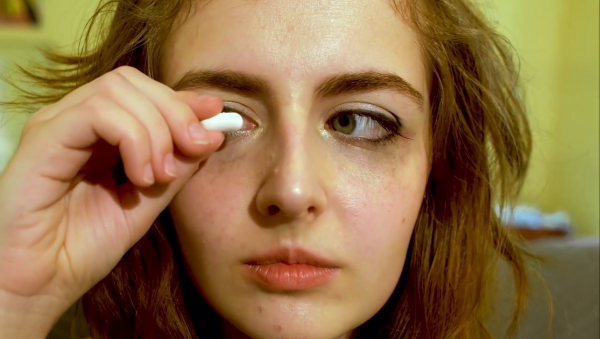For students, eating disorders are often a silent killer
Dominique Zale lost over 20 pounds in one month. This simply sounds like the aftermath of an extreme diet to some, but for her, it was a constant battle of wits.
She was struggling with bulimia, an eating disorder that involves binge eating and “purging,” or throwing up — and she didn’t want anyone to find her out.
“I dreaded eating with people,” said Zale, who spoke with The Record under an alias due to the nature of this story. “I would eat and go to the bathroom to purge. I never wanted anyone to know what I was doing because I didn’t want them to stop me.”
Burdened with outside stressors and a boyfriend she said made her feel “worthless,” Zale turned to the eating disorder to try and have a sense of control.
“I just had this need for perfection,” she said.
If Zale had continued binging and purging, she could have done serious damage to her body. Along with the superficial problems — discolored teeth, calluses on the hands from self-induced vomiting — comes a laundry list of other health issues.
According to the National Eating Disorders Association, bulimics can suffer from inflammation and potential rupturing of the esophagus, as well as an electrolyte imbalance that can lead to irregular heartbeat and heart attacks.
Anorexia nervosa, a disorder that involves starvation, deprives the body of its necessary nutrients. Those who practice it can suffer from osteoporosis, hair loss, severe dehydration and even kidney failure.
Zale’s story is not unique. The NEDA says that anorexia nervosa claims the most lives of any psychiatric disorder. The risk of suicide or death from medical complications is decidedly higher if the victim has an eating disorder.
Embodied within a perception of the self, an eating disorder will unfurl itself inside anyone who is vulnerable — and our society makes us vulnerable.
Numerous individuals, even young children, are bombarded by countless images from the media and peers of what is an acceptable body weight to be considered beautiful. This leads to a destructive emotional rationale that is continuously fed by the public, including the media. Eighty-one percent of 10-year-olds fear being perceived as fat, and in the U.S., 20 million women and 10 million men suffer from an eating disorder at some point in their lifetime.
“Although eating disorders are perceived to be primarily associated with women, 10 to 15 percent of those with eating disorders are men,” said Theresa Stephan Hains, director of Buffalo State’s Weigel Health Center. “It is also possible to overlook a diagnosis of an eating disorder because some people do not exhibit the stereotype of symptoms associated with them.”
No two sufferers look alike. For example, it may not be visible in a heavyset person if they are starving themselves, just as it may not be obvious if a very thin person binges and purges.
According to the University of Maryland’s Medical Center, there is no single cause for eating disorders. Although concerns about weight and body shape play a role in all eating disorders, the actual cause of these disorders appears to involve many factors, including those that are genetic, social, behavioral and psychological.
Zale stated that she was able to overcome her eating disorder by the support of her family due to the fact that she luckily suffered a small case of anorexia and bulimia.
For some who suffer with more severe cases and perhaps don’t have as strong a support team, treat can be long, enduring and costly.
“Treatment often involves therapy in a very controlled setting, where they learn to trust people,” explained Stephan Hains.
The most important thing to remember is that these disorders are mental, rather than physical, afflictions. The psychology of eating disorder patients is complicated and it takes time and effort to change their ways of thinking.
Jill M. Norvilitis, Ph.D, chair of the psychology department, says treatment includes cognitive behavioral therapy and response prevention – both psychological treatments, which is more common than medical treatment except in the most extreme weight-loss cases.
“We need to address the thoughts people have about their bodies, what their bodies should look like, and how they should eat,” Norvilitis said. “We also need to prevent them from doing things like vomiting or excessive dieting.”
Although Zale has recovered from her eating disorder, she says she’ll always fear slipping back into that habit, calling it “an addiction.”
“The fear is there all the time,” she said. “Some days are better than others, but I’m constantly aware of what I eat and how much I eat. I have to remind myself daily that no one is perfect, that I’m not overweight. I can’t let my family see me like that. I never want to see the looks of pity and guilt they had again.
“I never understood how much of an impact eating disorders can make in a person’s life. It’s not something you just stop. I think that’s something people need to realize.”
If you or someone you know is dealing with an eating disorder, Weigel Health Center is open 8:30 am to 8 pm Monday – Thursdays; and 8:30 am to 6 pm Fridays.
The Counseling Center is open Monday—Wednesday from 8:30 a.m. to 5 pm; Thursday from 8:30 a.m. to 6 pm and Friday from 8:30 to 5 pm.
Email: [email protected]






